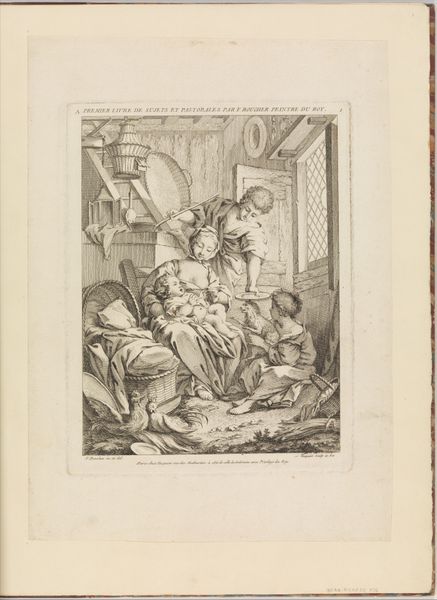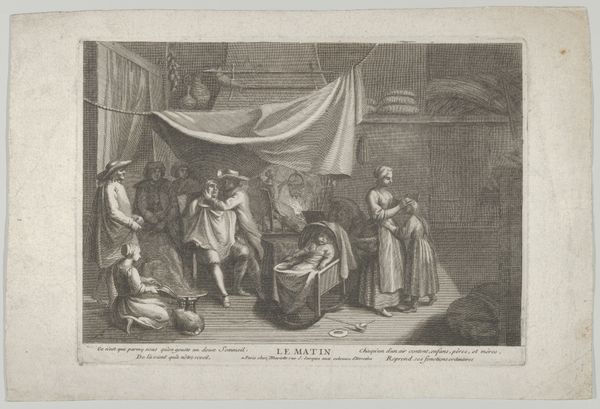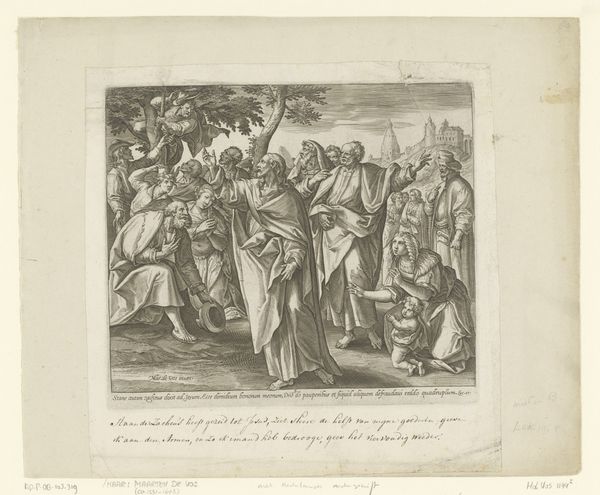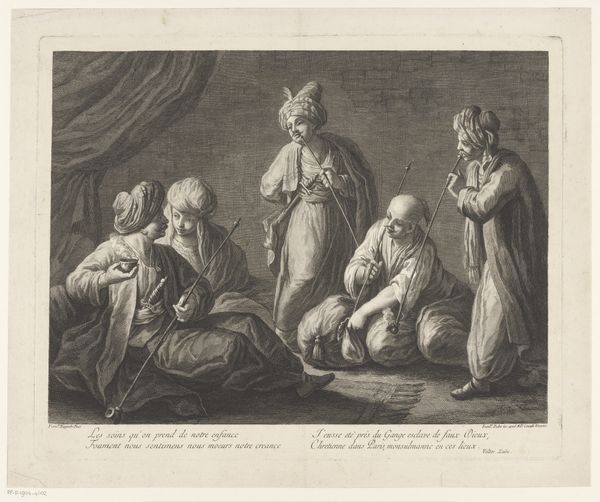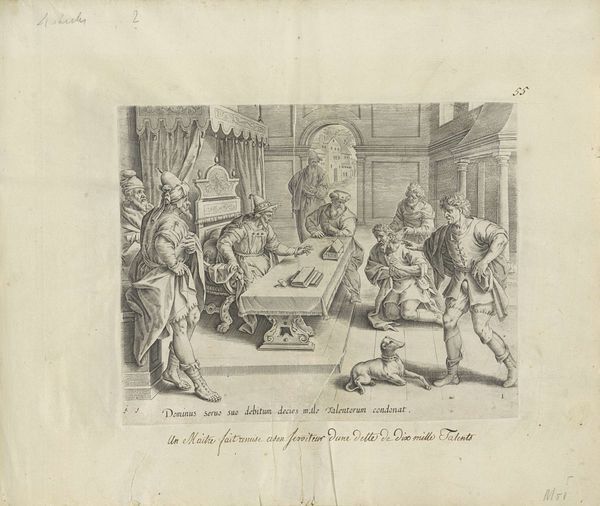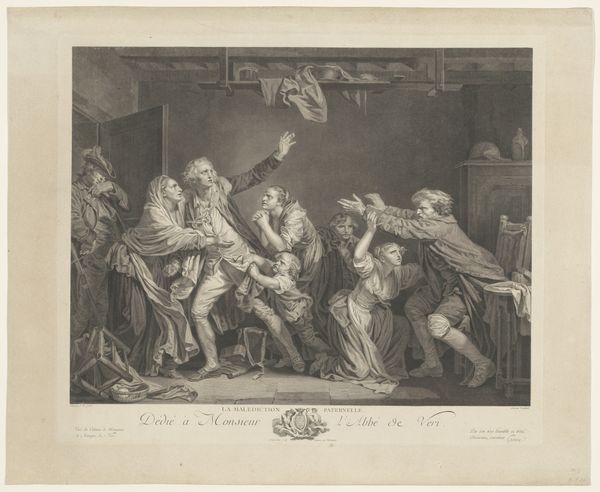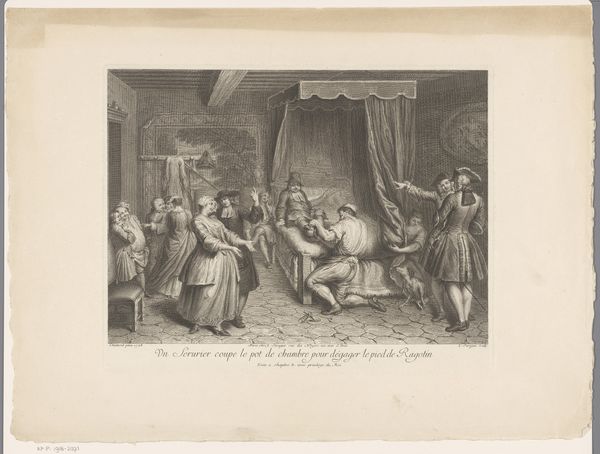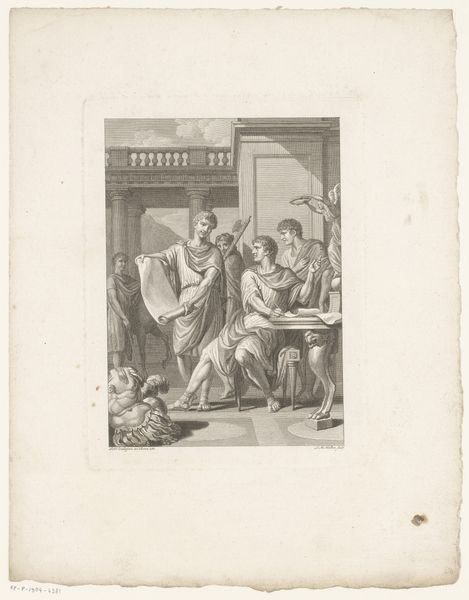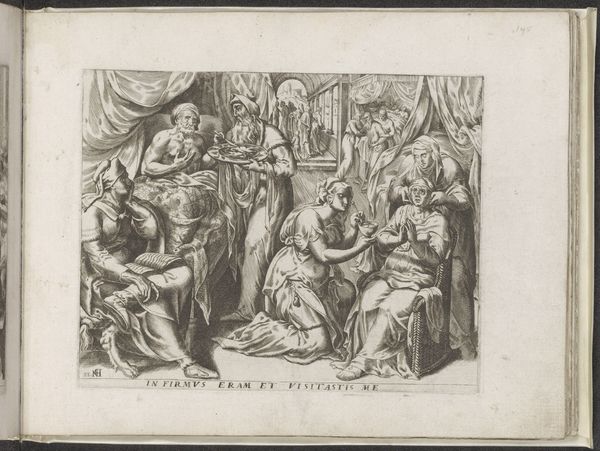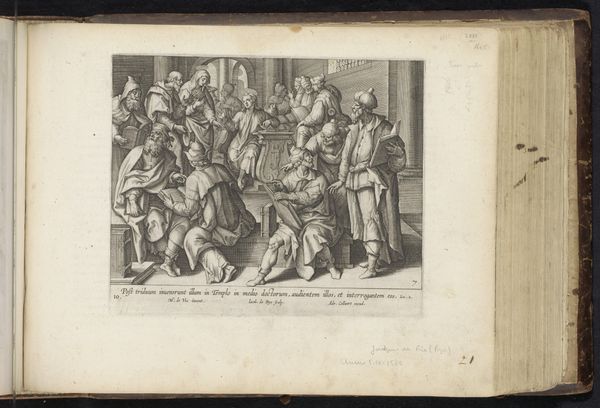
Dimensions: height 200 mm, width 228 mm
Copyright: Rijks Museum: Open Domain
Curator: Here we have an engraving from sometime between 1547 and 1612, "Maria Magdalena wast de voeten van Christus," attributed to Philips Galle. Editor: It feels almost cinematic in its depth. The detail, especially on their robes, draws me right into the scene, though there's a somber air about the composition overall. Curator: Galle was known for his printmaking, and this piece really showcases that. The intaglio technique—etching lines into the plate and then printing—would have involved specialized workshops, apprenticeships, and the division of labor among artisans. We have to consider who actually created this specific print—Galle himself or his workshop assistants following his designs? It’s this material process that brought the biblical story to a wider audience through accessible reproductions. Editor: Right, it’s fascinating to think about its accessibility! I see the clear gender dynamics. Mary Magdalene is kneeling, positioned lower than the men seated at the table, emphasizing her supplication and the traditional portrayal of women as subservient in these biblical narratives. It also speaks to her societal redemption, performing the act of humility as a former sinner washing Christ’s feet. Curator: And consider the materials too. Paper, ink, and the metal plate—all were commodities in their time. These were products of trade networks and shaped the possibilities for the distribution of ideas and narratives across Europe, as images were increasingly mobile and reproducible. Editor: Indeed, that act of washing—it's so potent! The exchange, the forgiveness implied... it resonates beyond religious context and echoes through ideas of repentance and the negotiation of power throughout history. Curator: Exactly. Understanding its material history contextualizes not only the object's making, but its meaning. Editor: And examining this piece reveals so much about the cultural narratives and social hierarchies inherent in religious art of that time. Seeing Galle's work with this lens enriches our appreciation. Curator: Absolutely, by looking closely at materials and techniques, alongside its social contexts, we get a much fuller understanding of the labor and complex dynamics at play here. Editor: Agreed. These conversations are pivotal in expanding our interpretation, linking a work to wider historical currents.
Comments
No comments
Be the first to comment and join the conversation on the ultimate creative platform.


